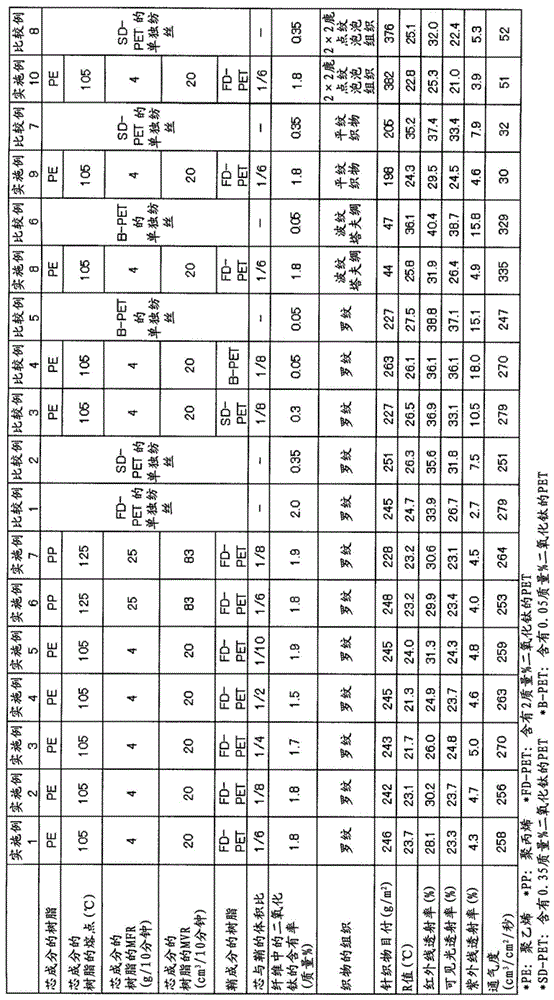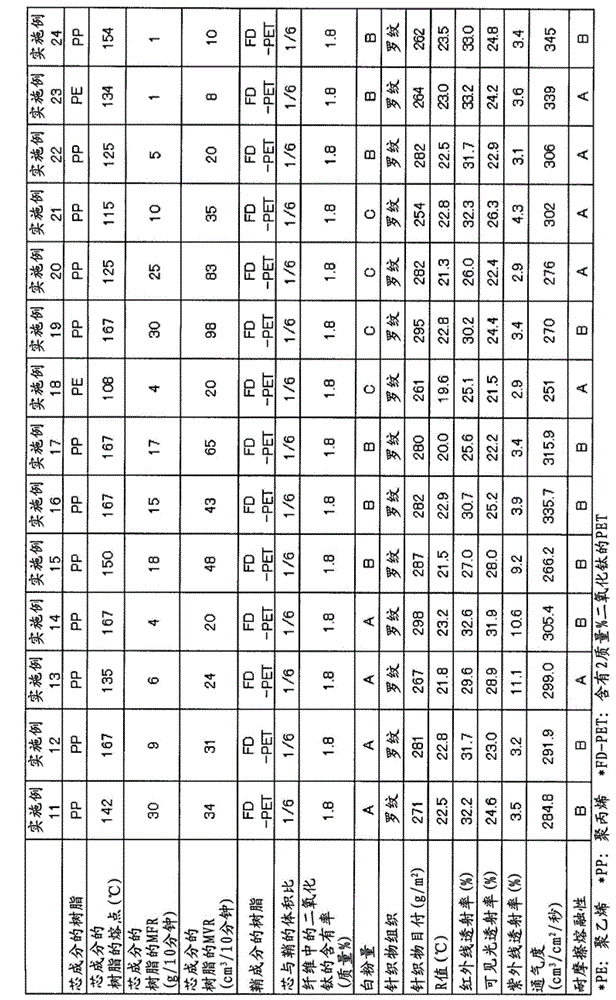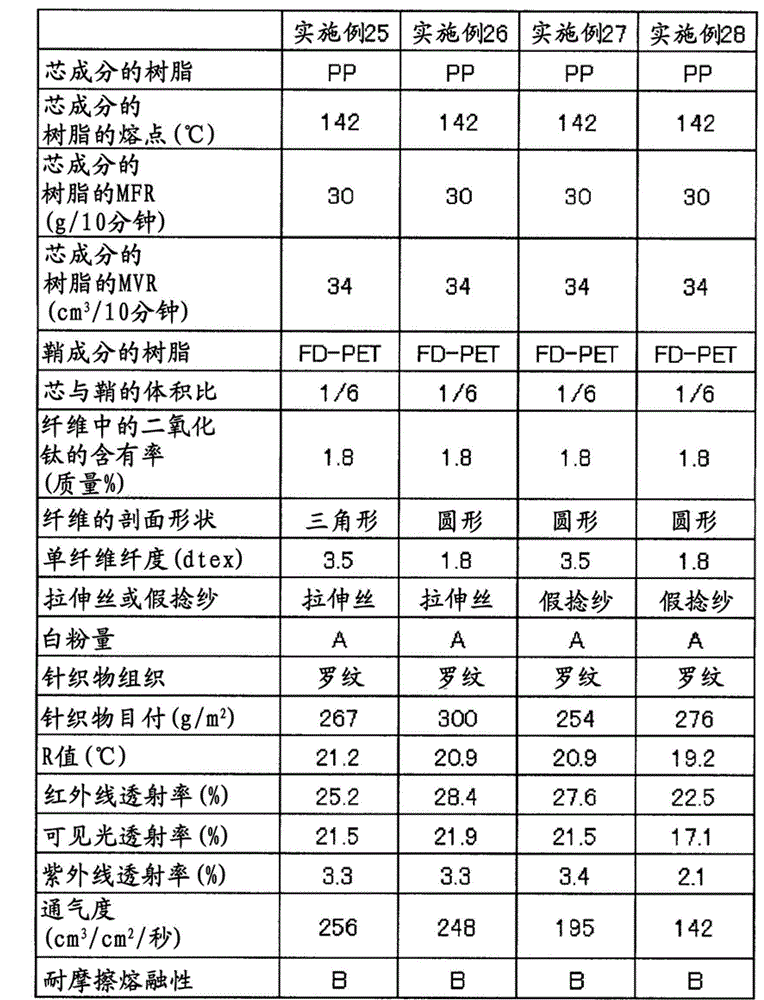Sheath-core compound fiber, false twist textured yarn composed thereof, method for manufacturing the same, and woven knit fabric including the fiber
A composite fiber and false twist deformation technology, which is applied in the direction of conjugated synthetic polymer artificial filament, textile, fabric, etc., can solve the problem of poor stability of the silk making process, low yarn strength, and damage to the touch of fibers and products, etc. problem, to achieve a good passability effect
- Summary
- Abstract
- Description
- Claims
- Application Information
AI Technical Summary
Problems solved by technology
Method used
Image
Examples
Embodiment 1
[0157] Polyethylene resin (PE) (manufactured by Nippon Polyethylene Co., Ltd., MFR 4 g / 10 minutes) was used as a core. By adding 2% by mass of titanium dioxide (anatase type, primary particle average A PET obtained with a particle size of 0.3 μm) was used as the sheath.
[0158] The core-sheath composite ratio (volume ratio) is 1 / 6, using a spinning device equipped with a core-sheath composite spinning nozzle with a hole diameter of 0.4mm and a hole number of 24, at a spinning temperature of 290°C and a spinning speed of 1800m / min. Undrawn filaments were obtained by spinning. The obtained undrawn yarn was drawn at a drawing speed of 600 m / min, a drawing temperature of 85° C., a heat setting temperature of 150° C., and a maximum draw ratio of 0.68 times to obtain a drawn yarn of 84 dtex24 filament. Four obtained drawn yarns were paralleled to have a fineness of about 330 dtex. A ribbed knitted fabric was produced using a flat knitting machine with 16 gauges (thread / 2.54 cm). ...
Embodiment 2~7 and comparative example 3、4
[0160] In Example 1, the core-sheath composite ratio (volume ratio) and the resin of the main component of the core were changed as shown in Table 1. In the same manner as in Example 1, stretched core-sheath composite fibers were produced. Silk and knitted fabrics. Table 1 shows the R value, infrared transmittance (%), visible light transmittance (%), ultraviolet transmittance (%), and air permeability of the obtained knitted fabric.
Embodiment 8
[0167] Using a core-sheath composite spinning nozzle with a hole diameter of 0.3 mm and a number of holes of 36 to produce a drawn yarn of 33dtex / 36 filaments, the drawn yarn of the core-sheath composite fiber of the present invention was obtained in the same manner as in Example 1. Stretch. Using this drawn yarn, a woven fabric of a ripple taffeta structure with a warp of 165 threads / 2.54 cm and a weft of 154 threads / 2.54 cm (cover factor value (cover factor value) 1832) was produced. Table 1 shows the R value, infrared transmittance (%), visible light transmittance (%), ultraviolet transmittance (%), and air permeability of the obtained woven fabric.
[0168] In addition, the cover factor value is a value obtained by the following formula.
[0169] Coverage factor value = (DWp) 1 / 2 ×MWp+(DWf) 1 / 2 ×MWf
[0170] Among them, DWp is the total warp fineness (dtex), MWp is the warp weaving density (root / 2.54cm), DWf is the weft total fineness (dtex), and MWf is the weft weavin...
PUM
| Property | Measurement | Unit |
|---|---|---|
| Melting point | aaaaa | aaaaa |
| Single fiber fineness | aaaaa | aaaaa |
| Aperture | aaaaa | aaaaa |
Abstract
Description
Claims
Application Information
 Login to View More
Login to View More - R&D
- Intellectual Property
- Life Sciences
- Materials
- Tech Scout
- Unparalleled Data Quality
- Higher Quality Content
- 60% Fewer Hallucinations
Browse by: Latest US Patents, China's latest patents, Technical Efficacy Thesaurus, Application Domain, Technology Topic, Popular Technical Reports.
© 2025 PatSnap. All rights reserved.Legal|Privacy policy|Modern Slavery Act Transparency Statement|Sitemap|About US| Contact US: help@patsnap.com



